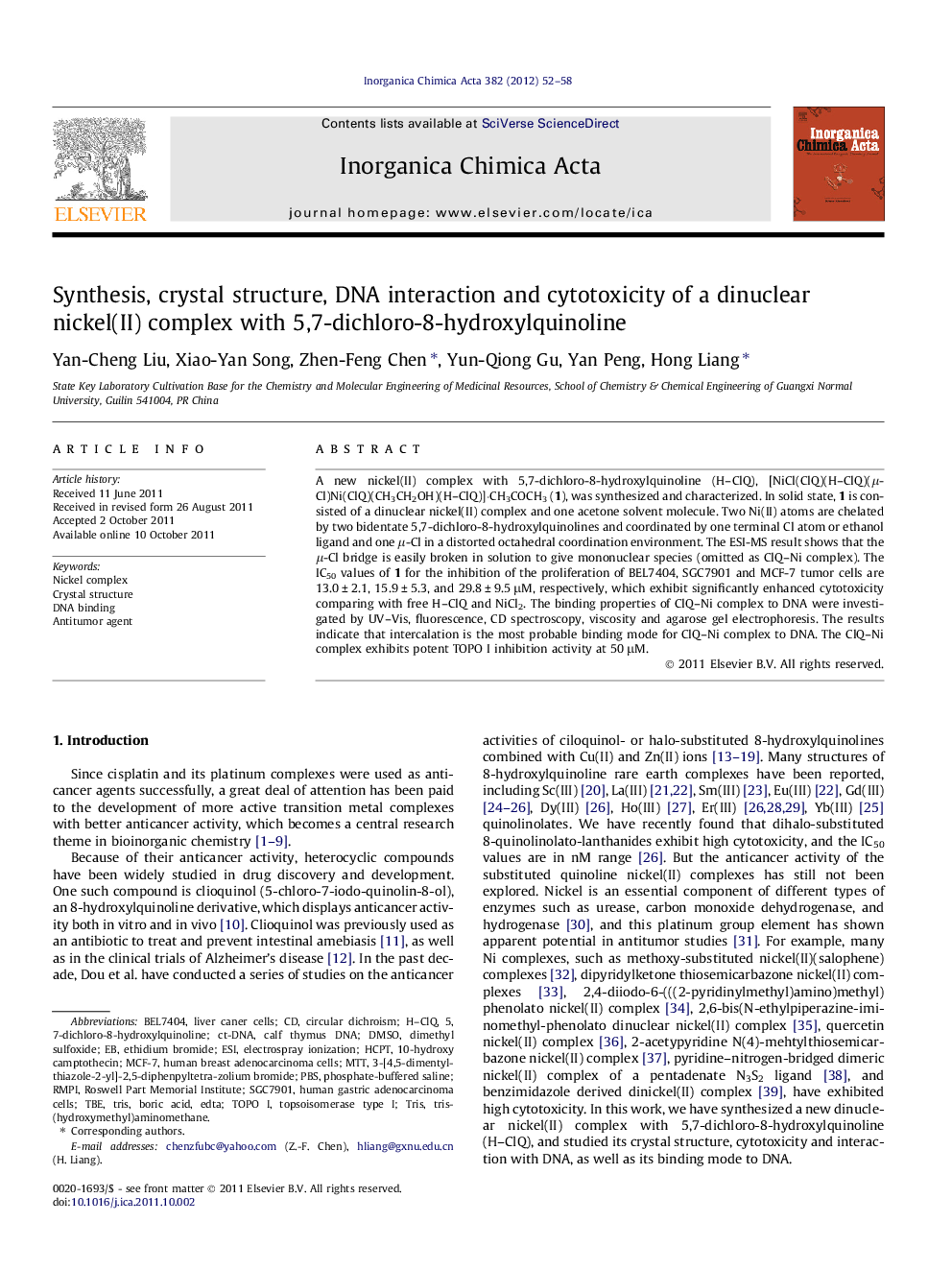| Article ID | Journal | Published Year | Pages | File Type |
|---|---|---|---|---|
| 1307317 | Inorganica Chimica Acta | 2012 | 7 Pages |
A new nickel(II) complex with 5,7-dichloro-8-hydroxylquinoline (H–ClQ), [NiCl(ClQ)(H–ClQ)(μ-Cl)Ni(ClQ)(CH3CH2OH)(H–ClQ)]·CH3COCH3 (1), was synthesized and characterized. In solid state, 1 is consisted of a dinuclear nickel(II) complex and one acetone solvent molecule. Two Ni(II) atoms are chelated by two bidentate 5,7-dichloro-8-hydroxylquinolines and coordinated by one terminal Cl atom or ethanol ligand and one μ-Cl in a distorted octahedral coordination environment. The ESI-MS result shows that the μ-Cl bridge is easily broken in solution to give mononuclear species (omitted as ClQ–Ni complex). The IC50 values of 1 for the inhibition of the proliferation of BEL7404, SGC7901 and MCF-7 tumor cells are 13.0 ± 2.1, 15.9 ± 5.3, and 29.8 ± 9.5 μM, respectively, which exhibit significantly enhanced cytotoxicity comparing with free H–ClQ and NiCl2. The binding properties of ClQ–Ni complex to DNA were investigated by UV–Vis, fluorescence, CD spectroscopy, viscosity and agarose gel electrophoresis. The results indicate that intercalation is the most probable binding mode for ClQ–Ni complex to DNA. The ClQ–Ni complex exhibits potent TOPO I inhibition activity at 50 μM.
Graphical abstractA dinuclear nickel(II) of complex [NiCl(ClQ)(H–ClQ)(μ-Cl)Ni(ClQ)(CH3CH2OH)(H–ClQ)]·CH3COCH3 (1) was found to display significantly enhanced cytotoxicity versus free H–ClQ and NiCl2.Figure optionsDownload full-size imageDownload as PowerPoint slideHighlights► A ClQ–Ni complex [NiCl(ClQ)(H–ClQ)(μ-Cl)Ni(ClQ)(CH3CH2OH)(H–ClQ)]·CH3COCH3 was synthesized and fully characterized. ► This ClQ–Ni complex displays significantly enhanced cytotoxicity versus free H–ClQ and NiCl2. ► The intercalation is the most probable binding mode for ClQ–Ni complex to DNA.
